Question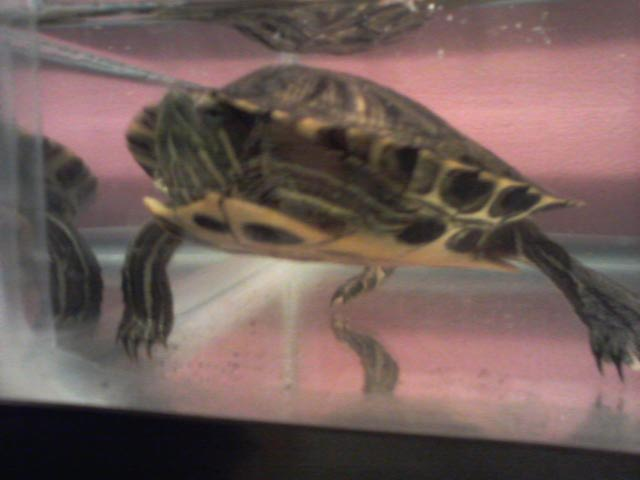 My RES Turtle
My RES Turtle
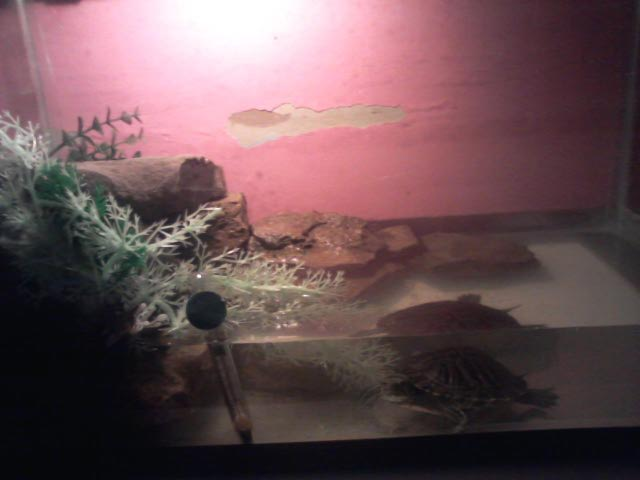 The Tank
The Tank
QUESTION: I Just Got A RES Turtle Yesterday At The Fair, And He/She Isn't Eating, I Noticed The Water Tempature Is 70 Degrees.... I Don't Have A Heater Yet, And I Can't Get One For A Week Tops.. Also, The Layout Of The Tank, He/She Goes Up On His/Her Basking Rock And Tries To Climb Out??? This Worries Me Because When He/She Tries To, She'He Slips Sometimes And Almost Falls... I've Tried Feeding Him/Her Worms, Lettuce, Carrots... I'm Worried, And I Need Help ASAP! Please Help, It'd Be GREATLY Appreciated!
ANSWER: Bringing home any pet without advance research is always a bad idea, and doubly so with reptiles, which have special care requirements. Aquatic turtles are very high maintenance animals that require fairly expensive equipment to maintain in captivity.
Here's what is required (none of it optional):
1) A UVB reptile light. If fluorescent, the light must be within 6 inches of the animal, preferably 4 inches. A mercury-vapor reptile light may be a better choice for a turtle, as it throws UVB much further, and also doubles as a heat lamp.
2) A heat lamp (if you aren't using the mercury-vapor light). This should be suspended over the tank or tub at the correct distance to produce a basking spot of 90 to 95F. This is absolutely essential to the turtle's health. It will be prone to infections (respiratory, mouth, shell, etc), and will be unable to digest food properly without it.
3) A digital thermometer with a remote probe, to ensure that the basking spot on the land area is the correct temperature.
4) The size for a standard tank should be approximately 10 inches per inch of shell length of the turtle, though I really recommend an equivalent-sized plastic tub rather than a glass tank, as glass tanks tend to discourage the very frequent cleaning that a turtle enclosure needs.
5) A dry basking area that is at least a full inch larger than the turtle, and allows the turtle to get completely out of the water, and get completely dry (including the plastron). This should not be too rough, or it could cause abrasions on the plastron.
6) Very clean water--if it's cloudy, or has any ammonia odor, it's too dirty. Dirty water also increases the risk of salmonella. Always wash hands after handling a turtle or things in its enclosure.
7) A proper diet consisting of quality pellets, fresh foods such as chopped earthworms, insects, and fish such as fresh (not frozen) tilapia or guppies, and greens such as dandelion, mustard, or escarole. Dust fresh foods with a calcium supplement containing vitamin D3.
Never use: Any sort of aquarium gravel or small items that might be ingested by the turtle and cause intestinal blockage. Be extremely careful with plastic plants, as pieces might break off and could be ingested.
Things that ARE Optional:
So long as a proper basking area is provided, it is not necessary to heat the water, provided it stays at 70F or above. However, some choose to heat the water to 80F.
An oversized aquarium canister filter can lengthen the time between full water changes (though they will still need to be done pretty often).
A secure, predator-proof outdoor pen with a pond can be used during the warm months of the year, and will be highly beneficial to the turtle's health and well-being. Natural sunlight can't be beat.
---------------
These turtles grow quite large, and adults must be housed in 100 gallon aquarium or similar-sized enclosure (such as a Waterland tub made for turtles). Adult size is likely to be reached by age 4 to 6. Females grow significantly larger than males.
If all of the above seems to be far more than you anticipated, and is too expensive, then you should immediately rehome the turtle with someone who has proper equipment to care for it, or surrender it to a reptile rescue. Either way, the turtle should be provided with some sort of heat source immediately, and I would not recommend doing without any of the other equipment for longer than 2 to 3 weeks, tops. Turtles this age grow quickly, and a turtle's body is very calcium-hungry. UVB light allows reptiles (and us) to create vitamin D in their skin. They aren't equipped to use vitamin D supplements very well (and D supplements are toxic in excess).
Aquatic turtles are probably one of the most high-maintenance pets you can find in a pet store, and a majority of people who bring them home do not know what they're getting themselves into, as pet stores notoriously fail to provide correct and complete information. As a result, these are probably the most neglected pets out there, and certainly wind up in rescues more often than any other reptile at present.
New reptiles may take up to a week to settle into a new environment, and should not be handled during this time. They may refuse food during this week, due to the stress. (Your turtle is doubly unlikely to eat, as it is probably simply too cold).
You should use a secure top on the tank if there is a risk of the turtle climbing out.
---------- FOLLOW-UP ----------
QUESTION: Okay, I Just Got A Thermometer For The Water, And Have A Heat Lamp On The Way. Also, I'll Be Getting A Smoother Basking Area, Since They're Real Rocks, And As You Stated Earlier, It Could Cause Abrasions. What Do I Do In The Mean Time To Help??? He's Approx. 4-5 Inches And His Tank Is Around 20.5 Inches, Is That Big Enough For Now??? Also, How Should I Make His Out Door Enclosure??? Would You Have Any Examples??? He Seems Much Happier Because I Warmed Up His Water For Him, And I Clean His Tank If/When It Gets Slightly Murky.
Basically My Questions Are:
What Do I Do As Of For Now Since I Can Only Use Real Rocks For Basking Rocks, Will These Hurt Him/Her???
He/She Is Around 4 In, And The Tank Is 20.5 In, Is That To Small???
What Should I Do As For An Out Door Enclosure, Would You Have Any Tips/Examples???
AnswerHi, Jennifer,
At this point, with so much information needed, your best option is to find a really good source--a good book, and this website:
http://www.austinsturtlepage.com/
It's one of the best aquatic turtle sites on the web, and should have plans for outdoor enclosures, information on enclosure sizes, and everything else you might have questions about!
I would say your turtle is ok in the current tank for now, but it won't last him 6 months--he'll very quickly outgrow it. You can use an ordinary light bulb with a $6 shop clamp lamp reflector for heat for now.



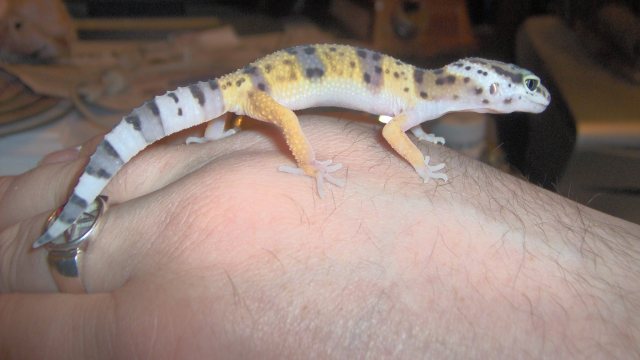 Leopard Geckos and Marking Territory
Question
My leo
Hi! I have a small leopard gecko who I
Leopard Geckos and Marking Territory
Question
My leo
Hi! I have a small leopard gecko who I
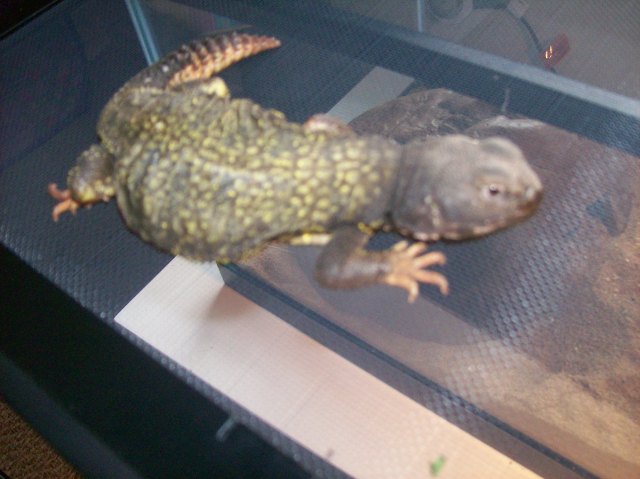 uromastyx question
QuestionMy lizard pretty cool
QUESTION: Hi i ju
uromastyx question
QuestionMy lizard pretty cool
QUESTION: Hi i ju
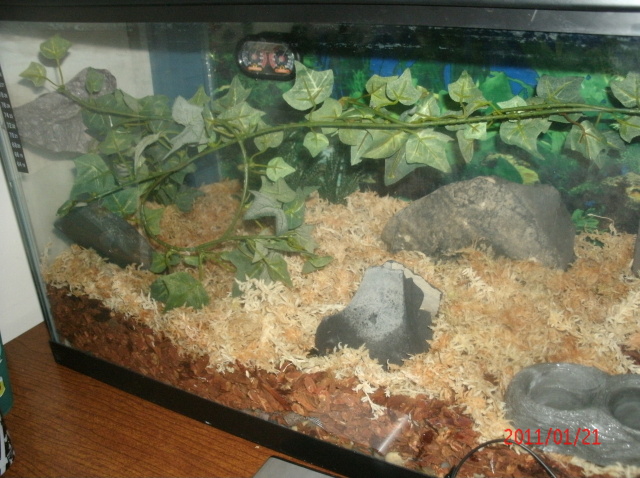 New crested gecko home
Question
cage
Hello, I have a 10 gallon cage setup read
New crested gecko home
Question
cage
Hello, I have a 10 gallon cage setup read
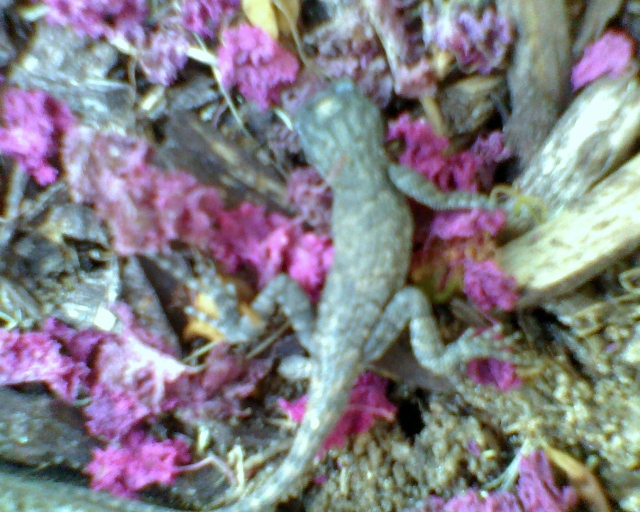 Gecko/Lizard at our office
QuestionLittle Guy
QUESTION: We have been seeing
Gecko/Lizard at our office
QuestionLittle Guy
QUESTION: We have been seeing
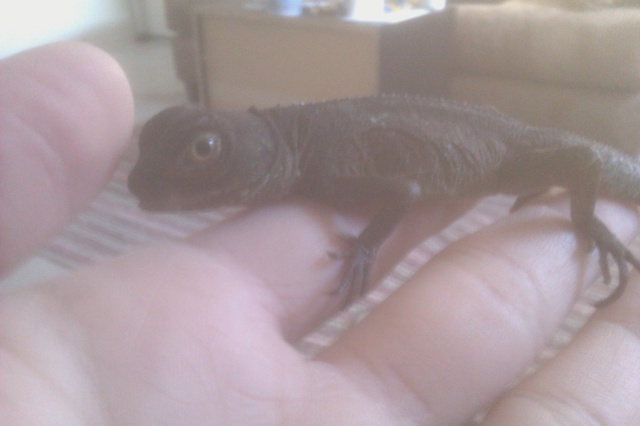 Should I be concerned about my CWD
QuestionQUESTION: Ive had this guy for probably a week
Should I be concerned about my CWD
QuestionQUESTION: Ive had this guy for probably a week